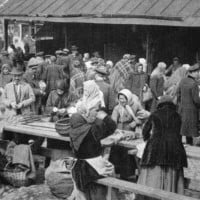Top 10 Misconceptions About the Holocaust
The Holocaust was a terrible time, but there are myths and misconceptions about the Holocaust that can even confuse the biggest history buffs. In this list, I will show some myths and what the truth really is. I hope you enjoy this list, and make sure to follow me if you like the lists I make. Enjoy!
This is in fact false. Although most of the prisoners in concentration camps were Jewish, the camps were also used for Romani people, prisoners of war, gays, lesbians, and many others who were considered "inferior" to the Third Reich.

Some Jewish people were not sent to concentration camps. For example, Danish Jews escaped to neutral Sweden, meaning most of them survived. Additionally, some were viewed favorably by Hitler and were even friends with him.

This is very false. There were actually four types of camps: concentration camps, transit camps, labor camps, and death camps. Although people died in all of them, death camps were specifically for the execution of prisoners by gas chambers. The only other reasons people died in the other camps were due to poor conditions, malnutrition, and being overworked.

This myth is very popular and can confuse many people, but it is only partially true. Only one concentration camp, the infamous Auschwitz, used number tattoos on their prisoners.

Not really. The main reasons Hitler was able to rise to power were hatred for communism and socialism, not anti-Semitism.

This is very false. There is extensive documentation, planning records, and survivors of the Holocaust. There is overwhelming evidence that the Holocaust happened. Yet some people still deny it.

Not really. Most of the prisoners in concentration camps died before the tide turned in WWII. For example, 75% of Jewish people in concentration camps died before the Battle of Stalingrad, so the chances of the Allies being able to save more Jewish people were low.

This is very false. Hitler first tried to send the Jews to Madagascar, but he wasn't able to do so. He then asked numerous countries such as the USA, Great Britain, France, and Australia, just to name a few, to accept Jewish refugees from his country. They all rejected the offer. He had no choice but to resort to his backup plan, the Holocaust.

It really wouldn't have. It would most likely have made the Nazis impose even harsher punishments and increased the death toll significantly.

Many Holocaust survivors, including some who came to Houston after WWII, were never held in concentration camps. They survived by taking refuge in the Soviet Union or by passing as non-Jews.



